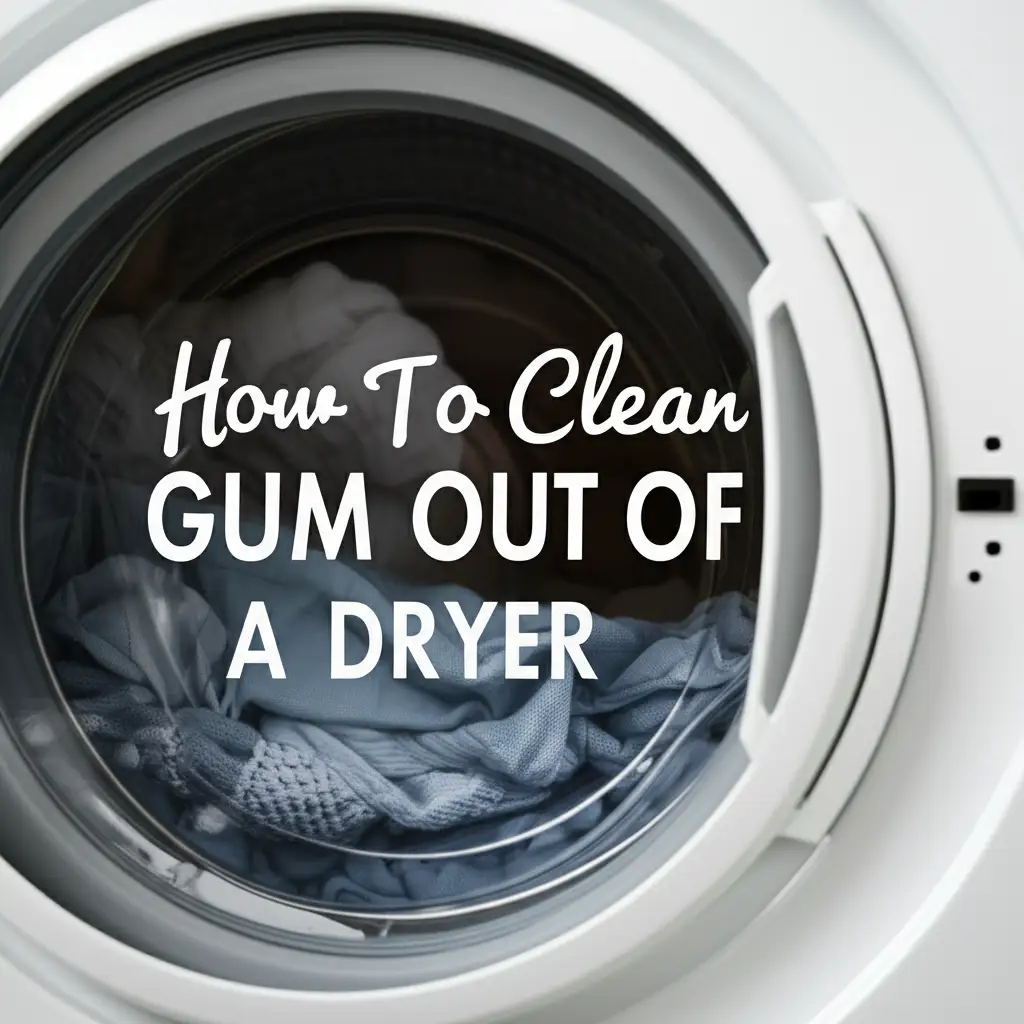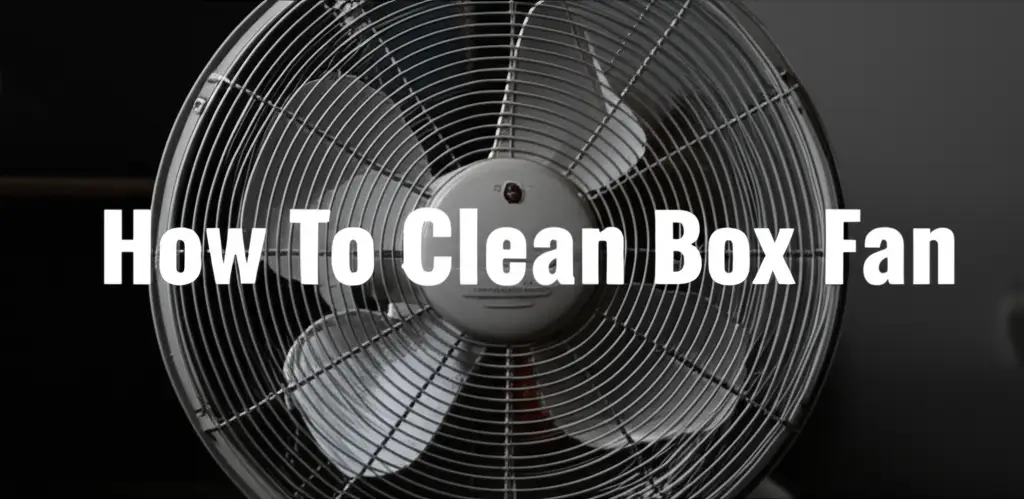· Home Appliance Care · 15 min read
How To Clean Gum Out Of A Dryer

Remove Sticky Messes: How to Clean Gum Out of a Dryer
We have all been there. You pull your clean, warm clothes from the dryer. Then you see it: a sticky, gooey, dark stain on your favorite shirt. Your heart sinks as you realize chewing gum has melted onto your clothes and, worse, onto the inside of your dryer drum. It feels like a disaster.
Cleaning gum out of a dryer can seem like a daunting task. The heat from the dryer turns a small piece of gum into a widespread, stubborn mess. It sticks to everything it touches. But do not despair. I have dealt with this sticky situation many times. I am here to share effective strategies with you. This guide will walk you through various methods to safely remove gum from your dryer. We will cover preparation, different cleaning agents, and crucial prevention tips. Get ready to restore your dryer drum and save your clothes.
Takeaway
- Act quickly: Fresh gum is easier to remove.
- Unplug first: Always disconnect power before cleaning your dryer.
- Choose your method: Use ice to freeze gum or heat to soften it.
- Scrape gently: Use plastic tools to avoid scratching the drum.
- Clean residue: Apply solutions like fabric softener, oil, or alcohol for sticky marks.
- Prevent future mishaps: Check all pockets before washing clothes.
How do you effectively clean gum out of a dryer?
You can clean gum out of a dryer effectively by first unplugging the appliance. Then, choose between freezing the gum with ice to make it brittle for scraping, or gently heating it with a hairdryer to soften it for wiping. Always use plastic tools to avoid damaging the dryer drum, and follow up with a residue cleaner.
Understanding the Problem: Why Gum Gets Stuck in Your Dryer
It happens to the best of us. A stray piece of chewing gum somehow makes its way into the laundry. Usually, it hides in a pocket. The washing machine often does little to dislodge it. Then, the clothes move to the dryer.
Once inside the dryer, the gum meets heat. This heat causes the gum to melt and spread. It becomes a sticky, gooey mess. The tumbling action of the dryer then smears it across the drum. This sticky residue can then transfer onto other clothes in subsequent loads. It leaves unsightly stains that are difficult to remove from fabrics. Acting quickly is important to prevent more damage. The longer the gum sits and bakes, the harder it becomes to remove. Fresh gum is always easier to tackle.
The gum can also collect lint and other debris. This makes the mess even worse. It creates a rough, sticky patch on your smooth dryer drum. This rough patch can snag delicate fabrics. It may even leave permanent marks on your clothes. Knowing how gum behaves under heat helps us choose the right cleaning method. We want to remove the gum without harming the dryer’s interior finish. So, understanding why it happens is the first step toward a clean dryer.
Preparation is Key: Safety First Before You Clean Gum
Before you start any cleaning, safety comes first. Working with appliances needs careful attention. My first rule is always to unplug the dryer. This removes any risk of electric shock. It also prevents the dryer from accidentally turning on while you are working inside.
Next, remove all clothes from the dryer drum. You need a clear, unobstructed view of the gum. Inspect the entire interior. Sometimes, a single piece of gum can leave multiple spots. Make sure you find every sticky area. Look closely at the drum walls, the lint trap housing, and even the paddles inside.
Gather your supplies next. Different methods use different tools. You might need ice cubes, a hairdryer, a plastic scraper, old rags or towels, and a cleaning solution. The cleaning solution could be fabric softener, vegetable oil, or rubbing alcohol. Having everything ready saves time and makes the process smoother. For similar cleaning situations, knowing the right tools makes a difference. If you have ever had to clean pen ink out of a dryer, you know how important proper preparation is. It ensures you have the right materials to tackle the job safely and effectively. Cleaning pen ink out of a dryer also requires careful steps to protect the drum’s surface.
Always choose non-abrasive tools for scraping. Plastic credit cards, old gift cards, or a plastic spatula work well. Avoid metal tools. Metal can scratch the dryer drum. This scratching can lead to rust or snag clothes in the future. A clean, scratch-free drum is important for the life of your appliance.
Method 1: Freezing Out the Gum with Ice
The ice method is often the first approach I try for gum removal. It works well because cold makes gum hard and brittle. This makes it easier to chip away. You will need a bag of ice cubes, a plastic scraper, and some paper towels or an old cloth.
First, take a handful of ice cubes. Place them in a plastic baggie or a thin cloth. This prevents water from melting directly onto the dryer drum. Press the ice pack directly onto the gum stain. Hold it there for about 10 to 15 minutes. The goal is to freeze the gum completely. It should feel very hard to the touch.
Once the gum is frozen solid, it will lose its stickiness. It will become brittle. Now, use your plastic scraper. Carefully scrape the gum off the dryer drum. Work slowly and gently. The gum should chip off in pieces. Avoid applying too much force. You do not want to damage the drum’s surface.
After removing the larger pieces, some residue might remain. This is normal. You can often remove small bits by rubbing them with another ice cube. The cold makes them easy to pick off. Wipe away any remaining moisture. This method is effective for fresh or baked-on gum. It is a very safe option for your dryer’s finish.
Method 2: Softening Gum with Heat for Easy Removal
Sometimes, freezing the gum is not enough. Or, you might find that softening it works better. This method uses gentle heat to loosen the gum’s grip. You will need a hairdryer, some old rags or paper towels, and a cleaning solution.
First, direct a hairdryer at the gum stain. Use a low to medium heat setting. Hold the hairdryer a few inches away from the gum. Move the hairdryer around slowly. This prevents overheating one spot. You want the gum to become soft and pliable, not liquid.
As the gum softens, it becomes gooey again. Do not let it melt too much. This could spread the mess. Once it is soft, immediately use an old rag or paper towel. Press it onto the softened gum. The gum should stick to the cloth. Gently lift and pull. You might need to repeat this step several times. Use a clean part of the rag each time.
For stubborn spots, apply a small amount of fabric softener or vegetable oil to the rag. Then, gently rub the softened gum. The oil or fabric softener helps to break down the gum’s stickiness. Wipe the area clean. This method is especially useful for gum that has spread thinly over a large area. It can also help with gum that has hardened over time. Always ensure the dryer is unplugged before using a hairdryer inside.
Using Household Solutions to Dissolve Gum Residue
After removing the main bulk of the gum, you might find some sticky residue. This remaining film can be annoying. It can also transfer to clothes. Luckily, several common household items can help. These solutions work by breaking down the gum’s chemical structure.
Dish Soap or Fabric Softener Method
Dish soap is excellent for cutting grease and grime. It can also help with sticky gum residue. Mix a few drops of mild dish soap with warm water. Dampen a clean cloth with this solution. Rub the cloth over the sticky residue. Use small, circular motions. The soap helps to lift the stickiness. This method is gentle and safe for most dryer drums.
Fabric softener also works wonders. It contains ingredients that can lubricate and loosen sticky substances. Apply a small amount of liquid fabric softener directly onto a clean cloth. Rub the cloth over the gum residue. You will notice the gum starting to ball up or smear away. This is a very effective and common trick. Both dish soap and fabric softener are gentle options. They will not harm your dryer’s finish. They also leave a fresh scent.
Oil-Based Solutions (Peanut Butter, Vegetable Oil)
It might sound strange, but oil-based products are very effective against gum. The oils in products like peanut butter or vegetable oil help to dissolve the gum’s sticky components. For this method, take a small dollop of creamy peanut butter or a few drops of vegetable oil. Apply it directly onto the gum residue.
Let the oil sit on the gum for a few minutes. This allows it to work its magic. Then, use a clean cloth to rub the area. The gum should start to disintegrate and wipe away. The oil helps to lift the gum without harsh scrubbing. After removing the gum, you must clean the oil residue. Use a cloth dampened with a mild dish soap solution or white vinegar. This ensures no oily film is left behind. A mix of vinegar and baking soda can also be a powerful combination for general cleaning, including residue removal. To learn more about effective cleaning methods using common household items, you can explore tips on how to clean with vinegar and baking soda.
Rubbing Alcohol or Nail Polish Remover (Acetone)
For very stubborn or dried-on residue, rubbing alcohol or non-acetone nail polish remover can be powerful. However, these are stronger solutions. Always test them in an inconspicuous area first. This ensures they do not damage your dryer’s finish. Apply a small amount to a cotton ball or a clean cloth. Dab it onto the gum residue.
Rub gently. The alcohol or acetone will help to break down the gum quickly. Use sparingly. Do not saturate the area. Once the gum is gone, wipe the area immediately with a damp cloth. This removes any chemical residue. Ensure good ventilation in the room when using these products. Always read the labels on your dryer for specific cleaning recommendations. Some dryer drums might react differently to harsh chemicals.
Tackling Tough Stains and Persistent Gum Marks
Even after the initial removal, you might face tough stains or ghost marks. These can be faint outlines or discolored patches where the gum once was. Persistence is key here. Do not give up!
First, revisit the previous methods. Sometimes, a second application of ice followed by a scrape can lift more. Or, another round of oil or fabric softener might loosen stubborn sticky bits. You can also try combining methods. For example, soften with heat, then apply oil, and finally wipe with a soapy cloth.
For light discoloration or a dull film, a “magic eraser” or melamine sponge can be surprisingly effective. Dampen the sponge slightly. Gently rub the stained area. These sponges have a fine abrasive quality that can lift surface marks. They do this without scratching. Always use light pressure. Do not scrub hard. You want to clean the surface, not abrade it.
If the gum has truly baked onto the drum and caused a deep stain, it might be permanent. This is rare but possible, especially if the gum was left for many cycles. In such cases, the dryer’s enamel might be discolored. If you are unsure or uncomfortable with the results, consider calling a professional appliance technician. They might have specialized tools or stronger, safe solvents. However, for most gum mishaps, these methods will work wonders.
Remember, the goal is to get your dryer drum smooth and clean again. This prevents any residue from transferring to your next load of laundry. Take your time. Be patient. Your efforts will result in a spotless dryer.
Final Steps: Cleaning Your Dryer Drum and Preventing Future Gum Mishaps
Once the gum is completely gone, your job is not quite done. It is important to clean the entire dryer drum. This removes any lingering residue, cleaner, or faint smells. Take a clean cloth. Dampen it with plain water or a mild solution of white vinegar and water. Wipe down the entire inside of the dryer drum. This ensures all traces of the cleaning agents are gone. Then, use a dry cloth to wipe it thoroughly. You want the drum to be completely dry.
After cleaning, run a “fluff” cycle. Place a few old towels or rags in the dryer. Run it on a low heat or air-fluff setting for 10-15 minutes. This helps to pick up any microscopic residue you might have missed. It also helps to air out any lingering smells from the cleaning products. Check the towels afterward to ensure no gum has transferred. Your dryer should now be pristine and ready for action.
Prevention is always better than cure. To avoid future gum incidents, make it a habit to check pockets. Before putting clothes in the washing machine, check every single pocket. I make sure my kids do this too. Gum, coins, tissues, and pens are common culprits that can cause dryer damage or stains. Establishing this simple routine saves you a lot of hassle.
Regular dryer maintenance also contributes to a clean and efficient appliance. Cleaning the lint trap after every load is vital. It prevents fires and helps your dryer run better. Sometimes, broader dryer maintenance, like cleaning the dryer vent, is also important. Knowing how to clean a dryer vent from outside with a drill or even how to clean a dryer vent with a leaf blower can keep your dryer in top condition. These steps prevent lint buildup and ensure proper airflow. A well-maintained dryer is less likely to harbor hidden debris that could cause issues later. Making these checks a habit will keep your dryer spotless and your clothes clean and gum-free.
FAQ Section
Can melted gum permanently damage my dryer?
Melted gum typically does not cause permanent damage to the dryer drum itself. The main issue is the sticky residue it leaves behind. This residue can transfer to clothes in future loads. If left for a long time, it might cause slight discoloration. However, with the right cleaning methods, you can almost always restore your dryer.
What if gum gets on my clothes in the dryer?
If gum transfers to your clothes, remove the garment immediately. Do not put it back in the dryer. For clothes, freezing the gum with an ice cube usually works best. Once frozen, gently scrape it off. For stubborn spots on fabric, apply a small amount of peanut butter or oil to the gum. Let it sit, then scrape and wash as usual.
Is WD-40 safe for dryer drums?
WD-40 can be used carefully to dissolve gum, as it contains petroleum-based solvents. Apply a small amount to a cloth, not directly to the drum. Rub the gum. Wipe the area thoroughly with a damp, soapy cloth afterward. You must remove all WD-40 residue. This prevents fire hazards or stains on clothes. Always ensure excellent ventilation.
How do I remove the gum smell from my dryer?
After removing the gum, a faint smell might remain. To remove it, wipe the drum with a cloth dampened with white vinegar. Vinegar neutralizes odors. Then, let the dryer air out with the door open for a few hours. Finally, run an empty “air fluff” cycle with a few old towels. This helps absorb any lingering smells and ensures no residue remains.
Can I use a commercial gum remover product?
Yes, you can use commercial gum remover products. Many are designed for various surfaces, including appliances. Always read the product label carefully. Ensure it is safe for painted or enamel surfaces. Test the product in an inconspicuous area of your dryer drum first. Follow the manufacturer’s instructions for application and removal. These products are often highly effective.
Conclusion
Finding gum in your dryer is certainly an unpleasant surprise. It causes frustration and worry about damaged clothes or appliance repairs. However, as we have explored, cleaning gum out of a dryer is a manageable task. You now have several powerful methods at your disposal. Whether you choose the freezing power of ice or the softening touch of heat, you can restore your dryer.
Remember the critical steps: unplug the dryer, assess the situation, and choose the right tools. Gentle scraping and targeted cleaning solutions will make short work of even the stickiest messes. From dish soap to oil, common household items prove highly effective. Most importantly, make prevention a habit. A quick check of pockets before laundry day saves you time and effort. Your dryer will remain spotless.
You are now equipped to handle this common household mishap with confidence. Keep your clothes clean and your dryer performing its best. For more helpful cleaning guides and solutions to everyday household challenges, visit BeaCleaner.com. We are always here to help you keep your home sparkling clean.
- dryer cleaning
- gum removal
- laundry tips




